![]()
![]()
![]()
Use LEFT and RIGHT arrow keys to navigate between flashcards;
Use UP and DOWN arrow keys to flip the card;
H to show hint;
A reads text to speech;
20 Cards in this Set
- Front
- Back
- 3rd side (hint)
|
Order Fusulinida |
-extinct order -shells made of tightly packed microgranular calcite |
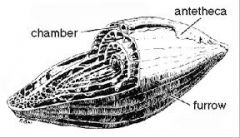
|
|
|
Genus Nummulites |
-large lenticular fossil -multiple coils -used from Egyptians as coins -pyramids constructed w/ limestone contained these |
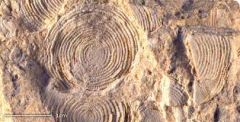
|
|
|
Genus Astraeospongia |
member of the Family Astraeospongiidae type of sponge |

|
|
|
Genus Hydnoceras |
-name from skeleton -skeleton made of six pointed siliceous spicules, meaning glass like -1 cm-3 feet -vase-shaped, spherical, saucer-shaped, pear-shaped, leaf-shaped, branching, and irregular or encrusting. -pores in outer wall where water is taken in |

|
|
|
Genus Archimedes |
-named because of corkscrew shape, like Archimedes’ pump -forms colonies -most common remains are fragments of mesh detached from central structure |
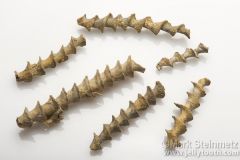
|
|
|
Genus Rhombopora |
-type of byrozoan -some of the most abundant fossils in the world. -both in marine and freshwater environments -lived at all latitudes and at depths ranging downward to at least 27,900 feet (8,500 meters). |
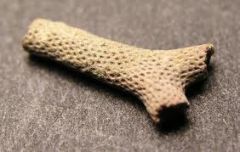
|
|
|
Class Graptolithnia |
-class of invertebrates -within the arthropod phylum -with a chitinous skeleton, three part body, three pairs of jointed legs, compound eyes, one pair antennae -among most diverse groups |
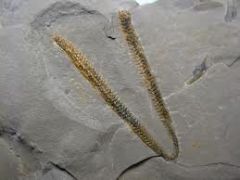
|
|
|
Genus Favosites |
-has polygon shaped, close packed corralites -walls between have holes to transfer nutrients between |
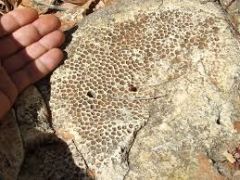
|
|
|
Genus Halysites |
-extinct genus of tabulate coral -1-10 cm in diameter -feeds on plankton |
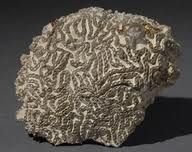
|
|
|
Genus Heliophyllum |
-found in Devonian marine rocks -solitary, not colonial |
|
|
|
Genus Hexagonaria |
hexagon shped |
|
|
|
Genus Septastraea |
something here |
|
|
|
Class Scyphozoa |
jellyfish |
|
|
|
Class Malacostraca |
-largest of six classes of crustaceans -segmented -abundant in all marine environments |
|
|
|
Infraclass Cirripedia |
-an arthropod -barnacles -sessile with two nektonic swimming stages (larval) -means curl footed -encrusters, grow on hard surfaces -mostly shallow waters |
|
|
|
Order Eurypterida (Eurypterid) |
-”sea scorpions” -extinct arthropods -close relative of horseshoe crabs |
|
|
|
Class Insecta |
-class of invertebrates -within the arthropod phylum -with a chitinous skeleton, three part body, three pairs of jointed legs, compound eyes, one pair antennae -among most diverse groups |
|
|
|
Genus Cryptolithus |
-genus of trilobites -as an adult, lacks eyes -”lace collar” trilobites, small holes/pits, it stirs up sediment and acts as a filter feeder |
|
|
|
Genus Elrathia |
-genus of trilobite species |
|
|
|
Genus Isotelus |
-lived during Ordovician period -largest trilobite- three species of Isotelus grew to almost a meter long. -possessed pits around the body could have housed sensory hairs. |
|

